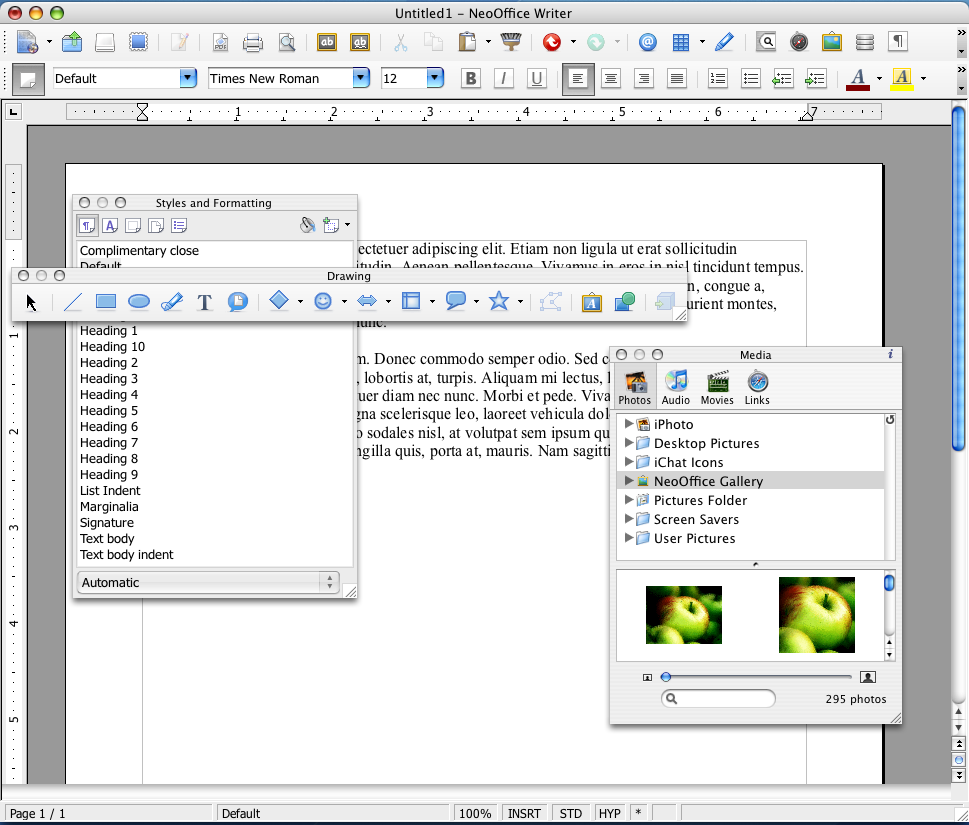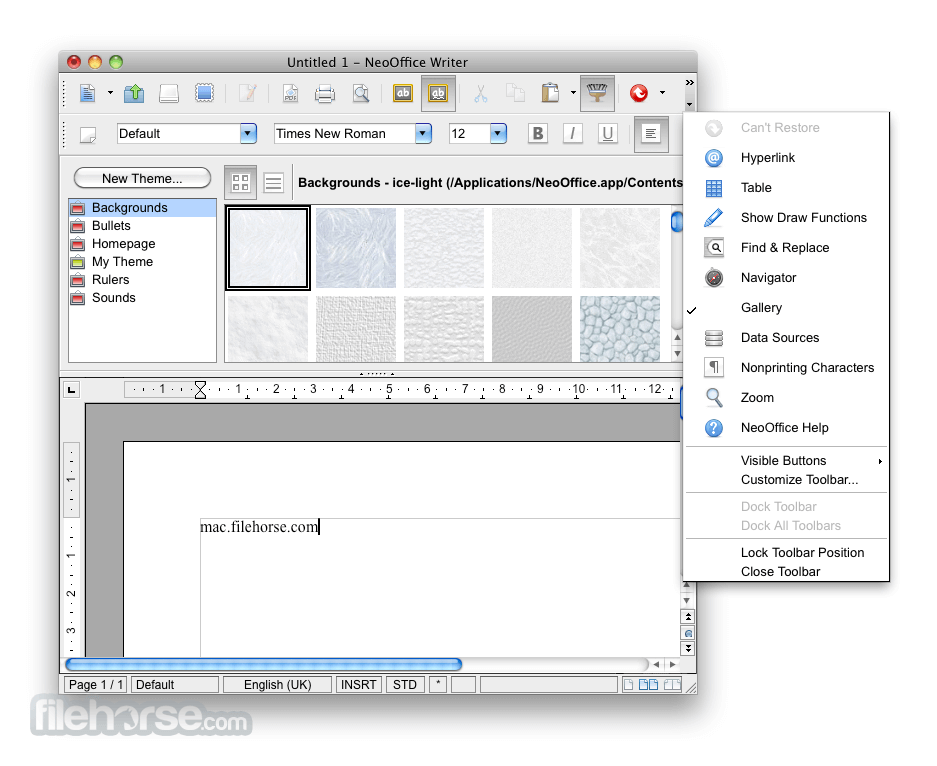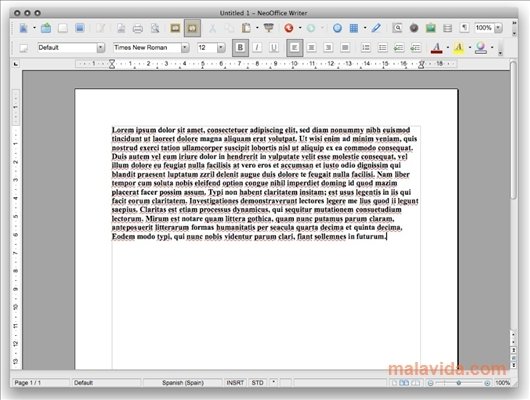

- #NEOOFFICE INSERT PDF#
- #NEOOFFICE INSERT MANUAL#
- #NEOOFFICE INSERT SOFTWARE#
- #NEOOFFICE INSERT MAC#
The following derives from experience with OOo 3.2.1:
#NEOOFFICE INSERT MANUAL#
Restarting page numbering after a manual page break. Choose the required page in the Style drop-down list.
 Page break is the default selected on the Insert Break dialog box. Specify the page number to start from and then click OK. Check With Page Style and specify the page style to use.
Page break is the default selected on the Insert Break dialog box. Specify the page number to start from and then click OK. Check With Page Style and specify the page style to use.  In the Position drop-down list, select Before or After to position where you want to insert the page break. In the Type drop-down list, select Page. On the Text Flow page of the Paragraph dialog box, check Insert in the Breaks area. Place the cursor in the first paragraph of the new page. You can restart page numbering in two ways. In addition, many documents have the front matter (such as the table of contents) numbered with Roman numerals and the main body of the document numbered in Arabic numerals, starting with 1. Often you will want to restart the page numbering at 1, for example, on the page following a title page or a table of contents. See Problems with restarting page numbering. If you restart page numbering anywhere in the document, then the total page count may not be what you want. Sync attachment files in Group libraries.The Page Count field inserts the total number of pages in the document, as shown on the Statistics page of the document's Properties dialog box ( File > Properties). Fill in your personal zotero account information. From the Tools menu, choose Preferences. Once it has looked up your PDF, it should say: Follow the directions to do that., then repeat the "Retrieve Metadata").
In the Position drop-down list, select Before or After to position where you want to insert the page break. In the Type drop-down list, select Page. On the Text Flow page of the Paragraph dialog box, check Insert in the Breaks area. Place the cursor in the first paragraph of the new page. You can restart page numbering in two ways. In addition, many documents have the front matter (such as the table of contents) numbered with Roman numerals and the main body of the document numbered in Arabic numerals, starting with 1. Often you will want to restart the page numbering at 1, for example, on the page following a title page or a table of contents. See Problems with restarting page numbering. If you restart page numbering anywhere in the document, then the total page count may not be what you want. Sync attachment files in Group libraries.The Page Count field inserts the total number of pages in the document, as shown on the Statistics page of the document's Properties dialog box ( File > Properties). Fill in your personal zotero account information. From the Tools menu, choose Preferences. Once it has looked up your PDF, it should say: Follow the directions to do that., then repeat the "Retrieve Metadata"). #NEOOFFICE INSERT PDF#
(The first time you do this, you will be prompted to open preferences and install PDF tools. Once it appears in the middle column, right click on the blue ball to the right of the title and choose "Retrieve Metadata from PDF". Drag and drop the PDF you want to add into the "My Library" folder. To do this, open your verson of Zotero, and, in another window, open the list of files on your computer. This will work best when the DOI is encoded in the PDF, such as articles downloaded from online journals. If you have an article in PDF format, you can drag it into Zotoro and have Zotoro see if they can find its citation via Google Scholar.
Drag in a PDF and have it generate a citation from it (this requires add-on tools be installed). Look up the item by standard number (ISBN, DOI, etc) through Zotero. Use the Zotero helper icon to import information from a database or book/article website (such as Google Books, Worldcat, Ebsco library databases, etc.). There are a number of ways to gather citations and put them in your Zotero database Begin inserting citations in your written documents. Install the helper app for your word processor. If you're not using the Mozilla version, install the helper app on the browser you do use. Create an account on to back-up and sync your citation collections. Decide whether to start with the Mozilla version or the standalone version. Zotero provides a great introduction in its Quick Start Guide. Plugins available for Microsoft Word and LibreOffice/OpenOffice/NeoOffice allow you to easily insert citations into your word-processing documents. There is a Zotero connector add on for Chrome, Safari and Opera browsers (but not for Internet Explorer). #NEOOFFICE INSERT MAC#
Zotero is available for Windows, Mac and Linux.
#NEOOFFICE INSERT SOFTWARE#
Your saved citations can be archived and shared between copies of the software with an online (free) account on. " Zotero is a free, easy-to-use tool to help you collect, organize, cite, and share your research sources." – Zotero has two main forms: an add-on for Mozilla Firefox, and a standalone application.







 0 kommentar(er)
0 kommentar(er)
